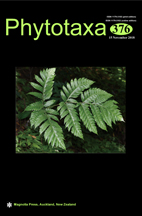Abstract
In 2014 Sukhorukov & Kushunina taxonomically restored the forgotten name Chenopodium pallidum applicable to a Himalayan taxon and designated its lectotype (a specimen in P) and also an epitype (in MW). However, in 2015 they published a correction to their article and demonstrated that the lectotype of C. pallidum in fact belongs to Atriplex and is most probably conspecific with A. schugnanica. The new combination Atriplex pallida was proposed, with A. schugnanica cited in its synonymy. The species of Chenopodium accepted by Sukhorukov & Kushunina in 2014 as C. pallidum was described in 2015 as C. harae Sukhor. (as “harai”), with its holotype in MW being the same specimen as the epitype of
C. pallidum. However, when introducing these nomenclatural novelties, the authors did not apply properly the provisions of the ICN, according to which the rejection of an epitype (as long as its supported type retains its status) is extremely complicated, or almost impossible without conservation. Moreover, the application of a name is ultimately established by its epitype, not by the type the epitype supports (in this case, the lectotype). Following the relevant articles of the ICN, it is concluded that (1) Chenopodium pallidum, by its epitypification (but not lectotypification), is the correct name for a Himalayan species of Chenopodium (despite the fact that its lectotype in P belongs to Atriplex), (2) C. harae and Atriplex pallida are homotypic synonyms of C. pallidum; and (3) Atriplex schugnanica (if taxonomically accepted) is the correct name for a species of Atriplex from the Pamir, Karakoram, and Himalayas. It is concluded that plant taxonomists, in order to avoid nomenclatural confusion, should be extremely careful with epitypifications and should not propose epitypes without the utmost necessity. A proposal to amend the Code aimed at better regulation of the existing procedure of epitypification is desirable.

